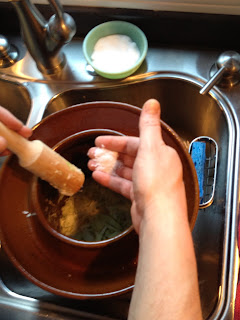The following summarizes the advice I’ve received concerning determining what perennial plants to use in your garden. I limit this to perennial plants because annuals don’t typically represent a big investment (they are temporary, so it doesn’t require as much thought).
Once you’ve decided to add a perennial to your garden, consideration should be given to the following since these will influence the success or failure:
Plant factors
Other factors
Naturally, when you water your new addition, consider using vermicompost tea if it is not too late in the year (you don't want a burst of new growth before first frost).
Once you’ve decided to add a perennial to your garden, consideration should be given to the following since these will influence the success or failure:
Plant factors
- Choose plants that naturally grow in your area. Native plants are a great choice. They are already adapted to the amount of sun, rainfall, & temperature swings (as well as other climatological factors) in your area. Also, native plants are not likely to create problems for other plants or wildlife by crowding out native plants.
- Select hardy plants that can thrive with intermittent or little care. Choose plants that can withstand variations in watering and fertilization schedules.
- Select plants that are interesting or colorful and/or produce fruit for you or for wildlife. These plants will bring you enjoyment throughout the year. Also, consider plants that create habitat for butterflies, birds, and other native or migratory species.
Other factors
- Be aware of microclimate conditions of your planting site. For example, is it heavily shaded or does it get a lot of morning or afternoon sun? Does it stay wet or drain readily. While the sunlight issues may require relocation, you can amend the soil to address water issues.
- Consider mulching or other weed suppression techniques to prevent your addition from becoming another source of work for you. Mulching has the added benefit of retaining moisture so you have to water less frequently.
Plan to dig a planting hold that is sized appropriately for your plant (three times the width of the root ball/pot and no deeper than the root ball or pot). - Amend your soil to suit your plant and soil type. I have sandy soil, so unless plants like that soil type, I always add lots of compost and vermicompost to my planting holes. Some people recommend mycorrhiza additions to aide in root formation and growth.
Naturally, when you water your new addition, consider using vermicompost tea if it is not too late in the year (you don't want a burst of new growth before first frost).
I hope you find this discussion useful.
Cheers,
Mark
Cheers,
Mark




































